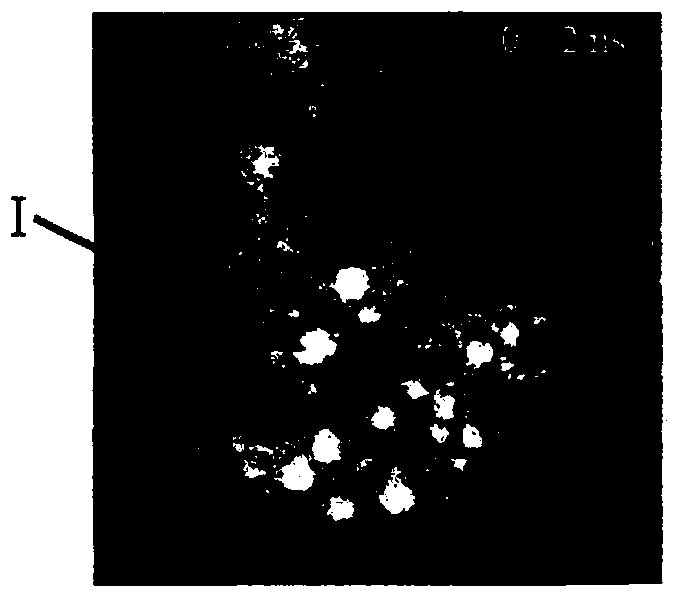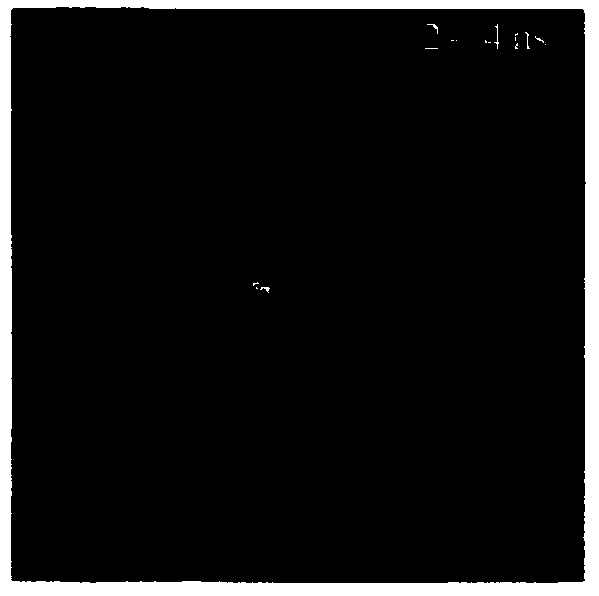Non-invasive method for specific 3d detection, visualization and/or quantification of an endogenous fluorophore such as melanin in a biological tissue
A biological tissue and fluorophore technology, applied in fluorescence/phosphorescence, diagnostic recording/measurement, image data processing, etc., can solve problems such as expensive and limited, and achieve rapid implementation, reduce quantity, and improve rapidity
- Summary
- Abstract
- Description
- Claims
- Application Information
AI Technical Summary
Problems solved by technology
Method used
Image
Examples
Embodiment 1
[0093] Example 1: In vivo observation of human skin
[0094] During the test, three-dimensional images of the human forearm were successively obtained in vivo. One three-dimensional image was composed of a stack of 70 two-dimensional images collected at a depth of 2.346 μm from the surface of the skin, using The device was acquired with an excitation wavelength of 760 nm and an objective lens of 40x / 1.3NA.
[0095] Figure 3A to Figure 3D A time series of three-dimensional images is shown, in which only four two-dimensional temporal images acquired in vivo on the skin of the forearm of a healthy volunteer, close to the basal layer of the epidermis at a depth of 50 μm relative to the skin surface are shown. For each temporal image, the fluorescence signal was integrated over a period of 2 ns.
[0096] Under experimental conditions, for a spot of a sample containing melanin, most of the emitted fluorescence photons are collected during the first time acquisition. The great...
Embodiment 2
[0103] Example 2: Evaluation of corticosteroid treatment by skin
[0104] On the same area of skin, before and after treatment with corticosteroids by the skin, use as previously described Microscope for observation.
[0105] Figure 9A Raw image showing the fluorescence of a sample of a skin region prior to processing, Figure 9C The corresponding melanin spots obtained by the method according to the invention are shown.
[0106] (In case of occlusion) Treatment of the skin by cutaneous corticosteroids.
[0107] Figure 9B and Figure 9D Raw images of the fluorescence of the samples and the corresponding melanin spots obtained by the method according to the invention after three weeks of treatment are shown.
[0108] The method according to the invention allows the specific detection of melanin; Figure 9C and Figure 9D A comparison of the spots shown in shows a reduction in the amount of melanin, allowing a better assessment of changes caused by cutaneous corti...
Embodiment 3
[0109] Example 3: Characterization of Human Skin Phototype I to Human Skin Phototype IV
[0110] Human skin is classified into six phototypes based on how it reacts to exposure to the sun. Darker skin (phototype V and phototype VI) has a greater amount of melanin, which naturally shields against ultraviolet (UV) rays. The method according to the invention allows a better analysis of pigmentation corresponding to the composition of phototype I to phototype IV of skin ranging from very fair to medium brown.
[0111] Figure 10A and Figure 10B Raw images of fluorescence of skin samples for various phototypes and corresponding melanin spots obtained by the method according to the invention are shown.
[0112] according to Figure 10B spots, calculate the 3D density of melanin in order to obtain Figure 10C , which demonstrates that the amount of melanin increases with light type.
[0113] as passed Figure 10B As shown by the spots corresponding to phototype I, the metho...
PUM
 Login to View More
Login to View More Abstract
Description
Claims
Application Information
 Login to View More
Login to View More - R&D
- Intellectual Property
- Life Sciences
- Materials
- Tech Scout
- Unparalleled Data Quality
- Higher Quality Content
- 60% Fewer Hallucinations
Browse by: Latest US Patents, China's latest patents, Technical Efficacy Thesaurus, Application Domain, Technology Topic, Popular Technical Reports.
© 2025 PatSnap. All rights reserved.Legal|Privacy policy|Modern Slavery Act Transparency Statement|Sitemap|About US| Contact US: help@patsnap.com



